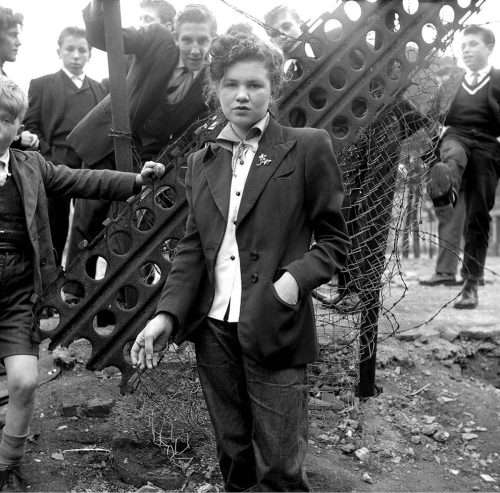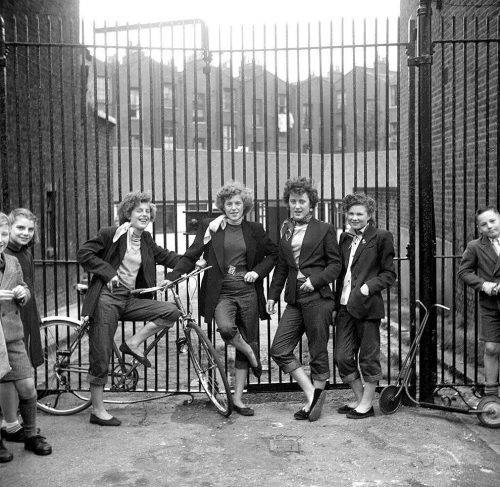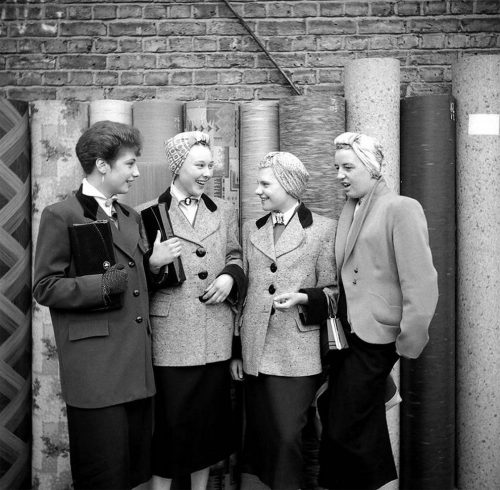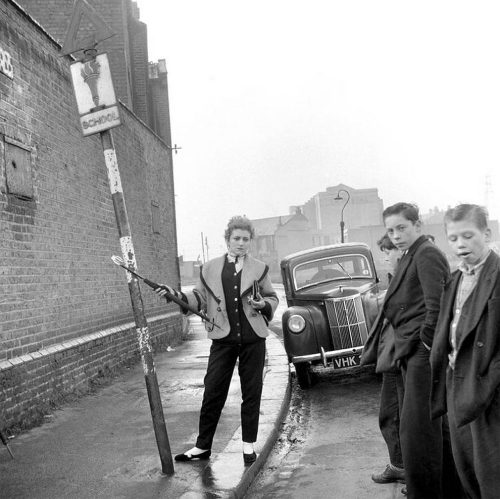On This Day, 6th May 1840, The First Adhesive Postage Stamp In The World, The Penny Black, Came Into

On this day, 6th May 1840, the first adhesive postage stamp in the world, the Penny Black, came into official use in Great Britain.
It depicted a portrait of Queen Victoria and stamps continued with her image until her death in 1901. All British stamps still show the monarch somewhere on the design. They are the only postage stamps in the world that do not indicate a country of origin; the monarch’s image symbolises the United Kingdom.
The Penny Black lasted less than a year. A red cancellation was hard to see on the black design and the red ink was easy to remove; both made it possible to re-use cancelled stamps. In February 1841, the Treasury switched to the Penny Red and began using black ink for cancellations instead, which was more effective and harder to remove.
The State Library of New South Wales holds significant postage stamp collections, which include a number of penny black stamps -
Sir William Dixson Stamp Collection
1840 One Penny black Queen Victoria Recess printed Watermark Small Crown Imperf ( 1 mint, 3 used, 1 forgery ) and
DP/M014 Series 02: Sir William Dixson Stamp Collection : Great Britain and Commonwealth Countries issued to 1952 Great Britain 1840
1840 One Penny black Recess printed Watermark Small Crown Imperf ( 6 used ) DP/M010 :- Box with miscellaneous items mounted on pages, numbered DP/M011 to DP/M127
More Posts from Philosophical-amoeba and Others

Harvard has a pigment library that stores old pigment sources, like the ground shells of now-extinct insects, poisonous metals, and wrappings from Egyptian mummies, to preserve the origins of the world’s rarest colors.

A few centuries ago, finding a specific color might have meant trekking across the globe to a mineral deposit in the middle of Afghanistan. “Every pigment has its own story,” Narayan Khandekar, the caretaker of the pigment collection, told Fastcodesign. He also shared the stories of some of the most interesting pigments in the collection.

Mummy Brown
“People would harvest mummies from Egypt and then extract the brown resin material that was on the wrappings around the bodies and turn that into a pigment. It’s a very bizarre kind of pigment, I’ve got to say, but it was very popular in the 18th and 19th centuries.”

Cadmium Yellow
“Cadmium yellow was introduced in the mid 19th century. It’s a bright yellow that many impressionists used. Cadmium is a heavy metal, very toxic. In the early 20th century, cadmium red was introduced. You find these pigments used in industrial processes. Up until the 1970s, Lego bricks had cadmium pigment in them.”
Annatto “The lipstick plant—a small tree, Bixa orellana, native to Central and South America—produces annatto, a natural orange dye. Seeds from the plant are contained in a pod surrounded with a bright red pulp. Currently, annatto is used to color butter, cheese, and cosmetics.”

Lapis Lazuli “People would mine it in Afghanistan, ship it across Europe, and it was more expensive than gold so it would have its own budget line on a commission.”
Dragon’s Blood “It has a great name, but it’s not from dragons. [The bright red pigment] is from the rattan palm.”

Cochineal “This red dye comes from squashed beetles, and it’s used in cosmetics and food.”
Emerald Green “This is made from copper acetoarsenite. We had a Van Gogh with a bright green background that was identified as emerald green. Pigments used for artists’ purposes can find their way into use in other areas as well. Emerald green was used as an insecticide, and you often see it on older wood that would be put into the ground, like railroad ties.”

Source


Why did Vikings have ‘Allah’ embroidered into funeral clothes?
A new investigation into the garments - found in 9th and 10th Century graves - has thrown up new insights into contact between the Viking and Muslim worlds.
The breakthrough was made by textile archaeologist Annika Larsson of Uppsala University. To unlock the puzzle, she enlarged the letters and examined them from all angles, including from behind. Read on

Beautiful Blaschka glass model of a Glaucus sea slug.
These amazing animals can give a painful sting if handled. This is because they feed on colonial cnidarians such as Portuguese man o’ war and store the venomous nematocysts of their prey for self-protection.

Southeast Asia before ASEAN: An ASEAN 50 Commemorative Post
Ironically, the region of Southeast Asia was not an Asian concept. It was a Western one. It was perceived primarily through Western eyes as maps were created during the colonial rush to Asia from the 16th to the early 20th century. Hence, it originated as a geographical concept, having been rendered in different words by Western scholarship, especially before the Second World War– words such as “south east Asia”, “southeast Asia” or “south-east Asia.” In the 1930s for example, Southeast Asia was referred to as “Further India” (as if to allude that it’s near the Bay of Bengal, when it is not) or “Asia of the Monsoons” (to refer to the typhoons that frequently ravage the area.” The regional name’s gradual standardization (no longer in the lowercase “southeast”) and the dropping of the hyphen resulted in the name “Southeast Asia.” It was first used and asserted by the Americans, with its U.S. State Department’s “division of Southeast Asian Affairs” and came to be used frequently by the media as the Second World War sparked in the Pacific in 1941.
After the war, the term “Southeast Asia” transformed from a geographic entity to be referred to, to a complex and inchoate group of nations trying to redefine themselves in the world. As each one dropped their colonial fetters and became independent–Indonesia from the Dutch (17 August 1945), Vietnam from the British (2 September 1945), the Philippines from the United States (4 July 1946), Myanmar from the British (4 January 1948), Laos (22 October 1953) and Cambodia (9 November 1953) from the French, Singapore and Malaysia from the British (16 September 1956), Brunei from the British (1 January 1984), with Thailand successfully retaining its sovereignty, each one has tried to redefine their identities apart from their colonial past. With ideological conflicts in parts of Asia, a Southeast Asian integration seems far off.

*Front page of the Southeast Asia Collective Defense Treaty, 8 September 1954, from the Archives New Zealand. The first attempt at a Southeast Asian cooperation was done in 1954. The United States initiated an alliance that was meant to contain Communism in Asia, and hence, on 8 September 1954, the Southeast Asia Collective Defense Treaty (or the Manila Pact) was signed by only two Southeast Asian countries–the Philippines and Thailand–and joined by the United States, France, Great Britain, New Zealand, Australia, Thailand, and Pakistan. This established the Southeast Asian Treaty Organization or SEATO, where all member countries agree that if any one of them were attacked, all the other member countries would come to its defense–very similar to the North Atlantic Treaty Organization (NATO). But SEATO would end as a failure, for the simple reason that it was seen suspiciously by the rest of Southeast Asia as “a fig leaf for the nakedness of American policy.” Pakistan withdrew in 1972, and France in 1975.

*Philippine President Macapagal, Indonesian President Sukarno and Malaysian Prime Minister Tunku Abdul Rahman signing agreements forming the MaPhiLindo on 5 August 1963 at the Juan Luna Hall of the Department of Foreign Affairs in Manila, from the Malacañang Presidential Museum and Library.

*The Philippine Commonwealth Government-in-Exile proposed a union with Indonesia in 1943, a Pan-Malayan principle reflected in this part of an American 1942 map entitled “Outline of the Post-War New World Map,” a proposed political boundary map at the event that the Allied forces would win World War II. The one marked in blue are the proposed American protectorates of the post-war world.
At almost the same time, another effort was put in at the time of President Diosdado Macapagal. Coming from our commonality as Malays (with the vision of the late President Manuel L. Quezon for a Pan-Malayan nationhood), President Macapagal envisioned a cooperation with other Malay countries. Hence, Macapagal convened a summit in Manila, together with Malaysian Prime Minister Tunku Abdul Rahman and Indonesian President Sukarno, where they signed the Manila Accord on 5 August 1963, addressing controversial issues over North Borneo and Sarawak joining the Federation of Malaysia. The Accord established the Maphilindo, striving for “Asian solutions by Asian nations for Asian problems.” However, this was also seen as a move by the Philippines and Indonesia to stall or halt the formation of the Federation of Malaysia, which eventually happened on 16 September 1963. Indonesia pulled out of the organization, in reaction to Malaysia’s formation which was seen by Indonesia as a threat to its sovereignty, hence the org’s dissolution.

*The five “Founding Fathers” of the ASEAN, signing the Bangkok Declaration, also known as the ASEAN Declaration, on 8 August 1967. From the ASEAN Archive.
This explains the tensed environment that the five Foreign Ministers of Southeast Asia found themselves in on 8 August 1967 in the Thai Department of Foreign Affairs in Bangkok, Thailand. Carefully, and diplomatically, these representatives from Indonesia (Adam Malik), Malaysia (Tun Abdul Razak), Singapore (S. Rajaratnam), Philippines (Narciso Ramos) and Thailand (Thanat Khoman), sat down together, chose their words carefully, patiently wrestled on their issues through dialogue, and bravely met on common ground. It entailed a larger vision, one that did not only concern each of their nation’s concerns, but one that gave space to regional unity in spite of their differences. Rajaratnam said to his counterparts on that day:
We must think not only of our national interests but posit them against regional interests: that is a new way of thinking about our problems. And these are two different things and sometimes they can conflict. Secondly, we must also accept the fact, if we are really serious about it, that regional existence means painful adjustments to those practices and thinking in our respective countries. We must make these painful and difficult adjustments. If we are not going to do that, then regionalism remains a utopia.
“Painful adjustments” indeed. After all was said and done, the five Foreign Ministers, representing their heads of state, after months of negotiations and compromise, finally and unequivocally signed the two-page ASEAN Declaration, establishing the Association of Southeast Asian Nations, and committing themselves to resolving disputes by peaceful means and through hard but committed mutual accommodation. Bereft of the colonial baggages of the previous southeast asian intergovernmental organizations, it was Southeast Asian, from the inception of the idea to its founding.
The founding of the ASEAN in 1967 led to the diplomatic reconciliation between Malaysia and Indonesia, and Malaysia and Singapore. And while a year later, Malaysia temporarily severed its diplomatic relations with the Philippines due to claims over Sabah, this kind of issues never impeded the commitment the two nations have in ASEAN, so was with the other member-states with similar problems. Since then, ASEAN has grown into a 10-member-state organization. This probably explains why ASEAN is “the most successful inter-governmental organization in the developing world today.”
In the occasion of the Philippine Chairmanship of the ASEAN and its 50th founding anniversary, Happy ASEAN 50th!

*Banner from ASEAN 50 Facebook.
*Post-script: The deafening silence of the Philippines with its unprecedented win in the arbitration ruling in the ASEAN meetings ought to make people question our foreign policy. Insisting on our sovereign rights over our EEZ does not mean war-mongering. Vietnam, on the other hand, the nation that defeated the United States in the Vietnam War, still insists the rule of law thus challenging Chinese encroachment diplomatically. It exemplifies a fair and “independent foreign policy.” The Philippines should follow Vietnam’s example.
*Map above: “South-east Asia” map made by Polish Army Topography Service as featured in Pergamon World Atlas in 1967, the year ASEAN was founded. From the David Rumsey Historical Map Collection.
Follow me on Facebook at facebook.com/indiohistorian
The Normans - A Timeline
911: According to later writer Dudo of Saint-Quentin, in this year the king of the Franks, Charles the Simple, grants land around the city of Rouen to Rollo, or Rolf, leader of the Vikings who have settled the region: the duchy of Normandy is founded. In return Rollo undertakes to protect the area and to receive baptism, taking the Christian name Robert.
1002: Emma, sister of Duke Richard II of Normandy, marries Æthelred (‘the Unready’), king of England. Their son, the future Edward the Confessor, flees to Normandy 14 years later when England is conquered by King Cnut, and remains there for the next quarter of a century. This dynastic link is later used as one of the justifications for the Norman conquest.
1016: A group of Norman pilgrims en route to Jerusalem are ‘invited’ to help liberate southern Italy from Byzantine (Greek) control. Norman knights have already been operating as mercenaries here since the turn of the first millennium, selling their military services to rival Lombard, Greek and Muslim rulers.
1035: Having ruled Normandy for eight years, Duke Robert I falls ill on his return from
a pilgrimage to Jerusalem and dies at Nicaea. By prior agreement, Robert is succeeded by his illegitimate son William, the future Conqueror of England, then aged just seven or eight. A decade of violence follows as Norman nobles fight each other for control of the young duke and his duchy.
1051: Duke William visits England. His rule in Normandy now established, and newly married to Matilda of Flanders, William crosses the Channel to speak with his second cousin, King Edward the Confessor of England. The subject of their conference is unknown, but later chroniclers assert that at this time Edward promises William the English succession.
1059: Pope Nicholas II invests the Norman Robert Guiscard with the dukedoms of Apulia, Calabria and Sicily. The popes had opposed the ambitions of the Normans in Italy, but defeat in battle at Civitate in southern Italy in 1053 had caused them to reconsider. In 1060 Robert and his brother Roger embark on the conquest of Sicily, and Roger subsequently rules the island as its great count.
1066: Edward the Confessor dies on 5 January, and the throne is immediately taken by his brother-in-law Harold Godwinson, the most powerful earl in England, with strong popular backing. Harold defeats his Norwegian namesake at Stamford Bridge in September. But on 14 October William’s Norman forces defeat Harold’s army at Hastings. William is crowned as England’s king on Christmas Day.
1069: The initial years of William’s reign in England are marked by almost constant English rebellion, matched by violent Norman repression. In autumn 1069 a fresh English revolt is triggered by a Danish invasion. William responds by laying waste to the country north of the Humber, destroying crops and cattle in a campaign that becomes known as the Harrying of the North, leading to widespread famine and death.
1086: Worried by the threat of Danish invasion, at Christmas 1085 William decides to survey his kingdom – partly to assess its wealth, and partly to settle arguments about landownership created by 20 years of conquest. The results, later redacted and compiled as Domesday Book, are probably brought to him in August 1086 at Old Sarum (near Salisbury), where all landowners swear an oath to him.
1087: William retaliates against a French invasion of Normandy. While attacking Mantes he is taken ill or injured – possibly damaging his intestines on the pommel of his saddle – and retires to Rouen, where he dies on 9 September. Taken to Caen for burial, his body proves too fat for its stone sarcophagus, and bursts when monks try to force it in. His eldest surviving son, Robert Curthose, becomes duke of Normandy, while England passes to his second son, William Rufus.
1096: Following a call to arms by Pope Urban II in 1095, many Normans set out towards the Holy Land on the First Crusade, determined to recover Jerusalem. Among them are Robert Curthose, who mortgages Normandy to his younger brother, William Rufus, and William the Conqueror’s notorious half-brother, Bishop Odo of Bayeux. Odo dies en route and is buried in Palermo, but Robert goes on to win victories in Palestine and is present when Jerusalem falls.
1100: Having succeeded his father in 1087 and defeated Robert Curthose’s attempts to unseat him, the rule of William II (‘Rufus’, depicted below) seems secure. But on 2 August 1100, while hunting in the New Forest with some of his barons, William is struck by a stray arrow and killed. His body is carted to Winchester for burial, and the English throne passes to his younger brother, Henry, who is crowned in Westminster Abbey just three days later.
1101: Roger I of Sicily dies. By the end of his long rule, Count Roger has gained control over the whole of Sicily – the central Muslim town of Enna submitted in 1087, and the last emirs in the southeast surrendered in 1091. He is briefly succeeded by his eldest son, Simon, but the new count dies in 1105 and is succeeded by his younger brother, Roger II.
1120: On 25 November Henry I sets out across the Channel from Normandy to England. One of the vessels in his fleet, the White Ship, strikes a rock soon after its departure, with the loss of all but one of its passengers. One of the drowned is the king’s only legitimate son, William Ætheling. Henry responds by fixing the succession on his daughter, Matilda, and marrying her to Geoffrey Plantagenet, count of Anjou.
1130: Roger II is crowned king of Sicily, having pushed for royal status in order to assert his authority over the barons of southern Italy. A disputed papal succession in 1130 has provided an opportunity and, in return for support against a papal rival, Pope Anacletus II confers the kingship on Roger in September. He is crowned in Palermo Cathedral on Christmas Day.
1135: Henry I dies in Normandy on 1 December, reportedly after ignoring doctor’s orders and eating his favourite dish - lampreys. His body is shipped back to England for burial at the abbey he founded in Reading. Many of his barons reject the rule of his daughter, Matilda, instead backing his nephew, Stephen, who is crowned as England’s new king on 22 December.
1154: King Stephen, the last Norman king of England, dies. His death ends the vicious civil war between him and his cousin Matilda that lasted for most of his reign. As a result of the Treaty of Wallingford, which Stephen was pressured to sign in 1153, he is succeeded by Matilda’s son Henry of Anjou, who takes the throne as Henry II.
1174: King William II of Sicily begins the construction of the great church at Monreale (‘Mount Royal’), nine miles from his capital at Palermo. The building is a fusion of Byzantine, Latin and Muslim architectural styles, and is decorated throughout with gold mosaics, including the earliest depiction of Thomas Becket, martyred in 1170.
1194: Norman rule on Sicily ends. Tancred of Lecce, son of Roger III, Duke of Apulia, seizes the throne on William’s death in 1189; on his death in 1194 he is succeeded by his young son, William III. Eight months later, Holy Roman Emperor Henry VI, husband of Roger II’s daughter Constance, invades Sicily and is crowned in Palermo on Christmas Day. The following day, Constance gives birth to their son, the future Frederick II.
1204: King John loses Normandy to the French. The youngest son of Henry II, John had succeeded to England, Normandy, Anjou and Aquitaine after the death of his elder brother, Richard the Lionheart, in 1199. But in just five years he lost almost all of his continental lands to his rival King Philip Augustus of France – the end of England’s link with Normandy.

How many did you know? All worth reading more about!!
11 New Facts Science Has Revealed About The Body
1. Hundreds of genes spring to life after you die - and they keep functioning for up to four days.
2. Livers grow by almost half during waking hours.
3. The root cause of eczema has finally been identified.
4. We were wrong - the testes are connected to the immune system after all.
5. The causes of hair loss and greying are linked, and for the first time, scientists have identified the cells responsible.
6. A brand new human organ has been classified - the mesentery - an organ that’s been hiding in plain sight in our digestive system this whole time.
7. An unexpected new lung function has been found - they also play a key role in blood production, with the ability to produce more than 10 million platelets (tiny blood cells) per hour.
8. Your appendix might actually be serving an important biological function- and one that our species isn’t ready to give up just yet.
9. The brain literally starts eating itself when it doesn’t get enough sleep. brain to clear a huge amount of neurons and synaptic connections away.
10. Neuroscientists have discovered a whole new role for the brain’s cerebellum - it could actually play a key role in shaping human behaviour.
11. Our gut bacteria are messing with us in ways we could never have imagined. Neurodegenerative diseases like Parkinson’s might actually start out in the gut, rather than the brain, and there’s mounting evidence that the human microbiome could be to blame for chronic fatigue syndrome.
Neuro chip records brain cell activity at higher resolution
Brain functions are controlled by millions of brain cells. However, in order to understand how the brain controls functions, such as simple reflexes or learning and memory, we must be able to record the activity of large networks and groups of neurons. Conventional methods have allowed scientists to record the activity of neurons for minutes, but a new technology, developed by University of Calgary researchers, known as a bionic hybrid neuro chip, is able to record activity in animal brain cells for weeks at a much higher resolution. The technological advancement was published in the journal Scientific Reports.

“These chips are 15 times more sensitive than conventional neuro chips,” says Naweed Syed, PhD, scientific director of the University of Calgary, Cumming School of Medicine’s Alberta Children’s Hospital Research Institute, member of the Hotchkiss Brain Institute and senior author on the study. “This allows brain cell signals to be amplified more easily and to see real time recordings of brain cell activity at a resolution that has never been achieved before.”
The development of this technology will allow researchers to investigate and understand in greater depth, in animal models, the origins of neurological diseases and conditions such as epilepsy, as well as other cognitive functions such as learning and memory.
“Recording this activity over a long period of time allows you to see changes that occur over time, in the activity itself,” says Pierre Wijdenes, a PhD student in the Biomedical Engineering Graduate Program and the study’s first author. “This helps to understand why certain neurons form connections with each other and why others won’t.”
The cross-faculty team created the chip to mimic the natural biological contact between brain cells, essentially tricking the brain cells into believing that they are connecting with other brain cells. As a result, the cells immediately connect with the chip, thereby allowing researchers to view and record the two-way communication that would go on between two normal functioning brain cells.
“We simulated what Mother Nature does in nature and provided brain cells with an environment where they feel as if they are at home,” says Syed. “This has allowed us to increase the sensitivity of our readings and help neurons build a long-term relationship with our electronic chip.”
While the chip is currently used to analyze animal brain cells, this increased resolution and the ability to make long-term recordings is bringing the technology one step closer to being effective in the recording of human brain cell activity.
“Human brain cell signals are smaller and therefore require more sensitive electronic tools to be designed to pick up the signals,” says Colin Dalton, adjunct professor in the Department of Electrical and Computer Engineering at the Schulich School of Engineering and a co-author on this study. Dalton is also the facility manager of the University of Calgary’s Advanced Micro/nanosystems Integration Facility (AMIF), where the chips were designed and fabricated.
Researchers hope the technology will one day be used as a tool to bring personalized therapeutic options to patients facing neurological disease.
Hearing with your eyes – A Western style of speech perception
Which parts of a person’s face do you look at when you listen them speak? Lip movements affect the perception of voice information from the ears when listening to someone speak, but native Japanese speakers are mostly unaffected by that part of the face. Recent research from Japan has revealed a clear difference in the brain network activation between two groups of people, native English speakers and native Japanese speakers, during face-to-face vocal communication.

It is known that visual speech information, such as lip movement, affects the perception of voice information from the ears when speaking to someone face-to-face. For example, lip movement can help a person to hear better under noisy conditions. On the contrary, dubbed movie content, where the lip movement conflicts with a speaker’s voice, gives a listener the illusion of hearing another sound. This illusion is called the “McGurk effect.”
According to an analysis of previous behavioral studies, native Japanese speakers are not influenced by visual lip movements as much as native English speakers. To examine this phenomenon further, researchers from Kumamoto University measured and analyzed gaze patterns, brain waves, and reaction times for speech identification between two groups of 20 native Japanese speakers and 20 native English speakers.
The difference was clear. When natural speech is paired with lip movement, native English speakers focus their gaze on a speaker’s lips before the emergence of any sound. The gaze of native Japanese speakers, however, is not as fixed. Furthermore, native English speakers were able to understand speech faster by combining the audio and visual cues, whereas native Japanese speakers showed delayed speech understanding when lip motion was in view.
“Native English speakers attempt to narrow down candidates for incoming sounds by using information from the lips which start moving a few hundreds of milliseconds before vocalizations begin. Native Japanese speakers, on the other hand, place their emphasis only on hearing, and visual information seems to require extra processing,” explained Kumamoto University’s Professor Kaoru Sekiyama, who lead the research.
Kumamoto University researchers then teamed up with researchers from Sapporo Medical University and Japan’s Advanced Telecommunications Research Institute International (ATR) to measure and analyze brain activation patterns using functional magnetic resonance imaging (fMRI). Their goal was to elucidate differences in brain activity between the two languages.
The functional connectivity in the brain between the area that deals with hearing and the area that deals with visual motion information, the primary auditory and middle temporal areas respectively, was stronger in native English speakers than in native Japanese speakers. This result strongly suggests that auditory and visual information are associated with each other at an early stage of information processing in an English speaker’s brain, whereas the association is made at a later stage in a Japanese speaker’s brain. The functional connectivity between auditory and visual information, and the manner in which the two types of information are processed together was shown to be clearly different between the two different language speakers.
“It has been said that video materials produce better results when studying a foreign language. However, it has also been reported that video materials do not have a very positive effect for native Japanese speakers,” said Professor Sekiyama. “It may be that there are unique ways in which Japanese people process audio information, which are related to what we have shown in our recent research, that are behind this phenomenon.”
These findings were published in the journal “Scientific Reports” on August 11th and October 13th, 2016.
im putting together a couple of scottish folk mixes bc that’s what i do and im honestly curious if anyone in my country has ever been unequivocally happy about anything ever
-
 da-rk-para-dis-e liked this · 7 years ago
da-rk-para-dis-e liked this · 7 years ago -
 camfoc liked this · 8 years ago
camfoc liked this · 8 years ago -
 frenchmochadreams reblogged this · 8 years ago
frenchmochadreams reblogged this · 8 years ago -
 sutton15445 reblogged this · 8 years ago
sutton15445 reblogged this · 8 years ago -
 ciaoveneca liked this · 9 years ago
ciaoveneca liked this · 9 years ago -
 othmeralia liked this · 9 years ago
othmeralia liked this · 9 years ago -
 nince62 liked this · 9 years ago
nince62 liked this · 9 years ago -
 lovemondofan liked this · 9 years ago
lovemondofan liked this · 9 years ago -
 halifaxlawlore reblogged this · 9 years ago
halifaxlawlore reblogged this · 9 years ago -
 thepiledriver-waltz liked this · 9 years ago
thepiledriver-waltz liked this · 9 years ago -
 martianhare reblogged this · 9 years ago
martianhare reblogged this · 9 years ago -
 feralwildflower liked this · 9 years ago
feralwildflower liked this · 9 years ago -
 syncos-biggest-fan liked this · 9 years ago
syncos-biggest-fan liked this · 9 years ago -
 ottori48 liked this · 9 years ago
ottori48 liked this · 9 years ago -
 shewhocollectwatches liked this · 9 years ago
shewhocollectwatches liked this · 9 years ago -
 silentambassadors liked this · 9 years ago
silentambassadors liked this · 9 years ago -
 wecouldhangout liked this · 9 years ago
wecouldhangout liked this · 9 years ago -
 richardoverell liked this · 9 years ago
richardoverell liked this · 9 years ago -
 spilledparchment reblogged this · 9 years ago
spilledparchment reblogged this · 9 years ago -
 spilledparchment liked this · 9 years ago
spilledparchment liked this · 9 years ago -
 rocknrollmegan liked this · 9 years ago
rocknrollmegan liked this · 9 years ago -
 theegoist liked this · 9 years ago
theegoist liked this · 9 years ago -
 cityoflondonlibraries liked this · 9 years ago
cityoflondonlibraries liked this · 9 years ago -
 junktownmelons reblogged this · 9 years ago
junktownmelons reblogged this · 9 years ago -
 collectivesighs reblogged this · 9 years ago
collectivesighs reblogged this · 9 years ago -
 collectivesighs liked this · 9 years ago
collectivesighs liked this · 9 years ago -
 heaveninawildflower reblogged this · 9 years ago
heaveninawildflower reblogged this · 9 years ago -
 heaveninawildflower liked this · 9 years ago
heaveninawildflower liked this · 9 years ago -
 philosophical-amoeba reblogged this · 9 years ago
philosophical-amoeba reblogged this · 9 years ago -
 uwmspeccoll liked this · 9 years ago
uwmspeccoll liked this · 9 years ago -
 statelibrarynsw reblogged this · 9 years ago
statelibrarynsw reblogged this · 9 years ago
A reblog of nerdy and quirky stuff that pique my interest.
291 posts









